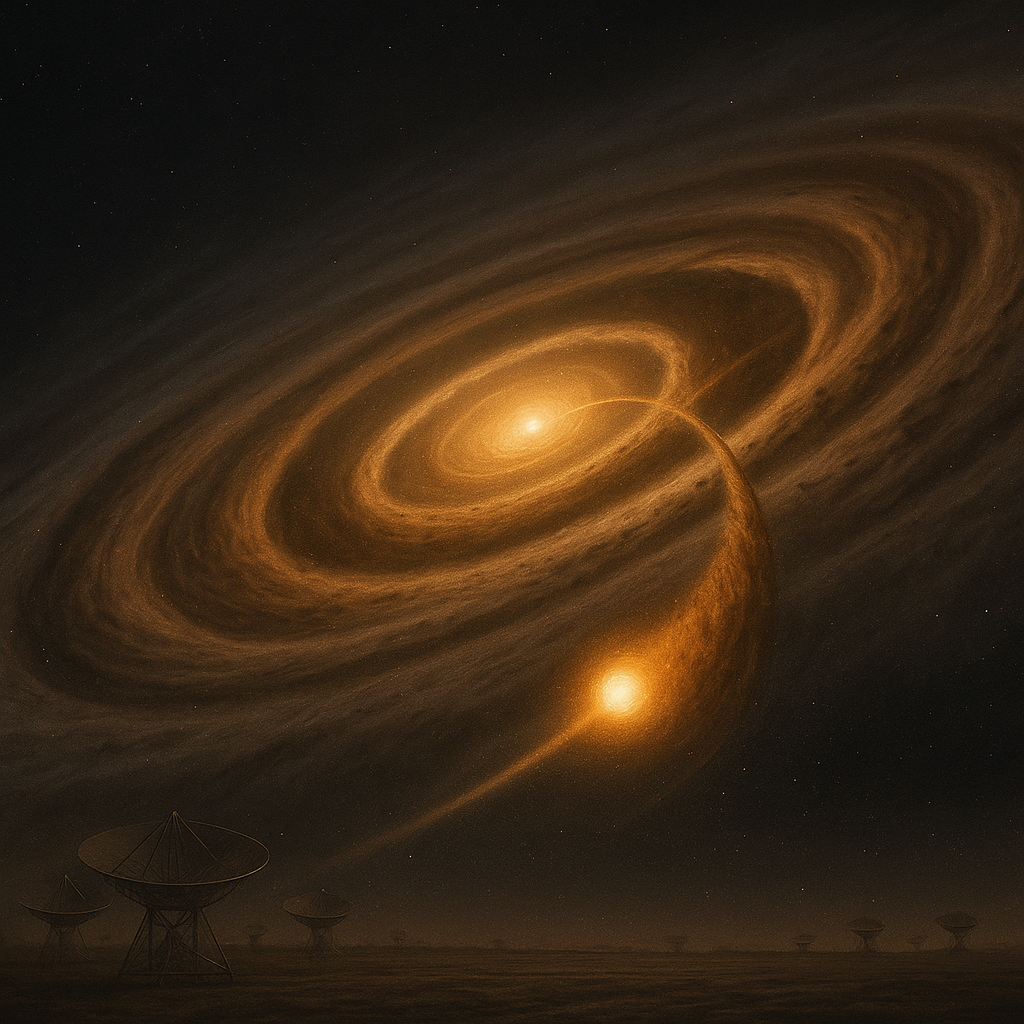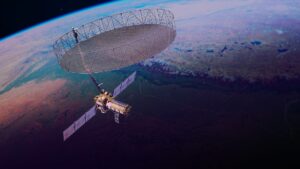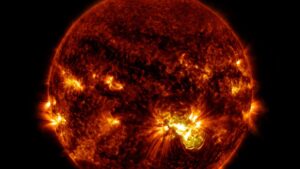Astronomers have captured the first-ever direct image of a planet forming within a protoplanetary disk—embedded in a spiral arm around the young star HD 135344B, located 440 light‑years away in Lupus. This breakthrough observation was made using the ERIS instrument on ESO’s Very Large Telescope in Chile. (Live Science)
The newly observed object is estimated to be about twice the size of Jupiter and located at approximately Neptune-like orbital distance from its host. Its presence provides compelling evidence that nascent planets can sculpt surrounding disk material. (Live Science)
Unprecedented Planet-in-Spiral Detection
The planet is embedded at the base of a spiral arm seen in optical and infrared images. ERIS’s high resolution allowed astronomers to separate the planet’s light from dust structures, distinguishing it from previous indirect detections. (Live Science)
According to study lead Francesco Maio, observing the planet’s own emission, rather than just gaps or shadows, enables stronger confirmation of its planetary nature. This detection aligns with models predicting planet-induced spiral arms in disks. (Live Science)
Implications for Planet Formation Theory
This observation provides a rare case study of planet formation in action. It supports theoretical frameworks suggesting massive planets can emerge within disks and sculpt spiral patterns during early stages. (Nature Astronomy)
It also marks a milestone for instrumentation. ERIS captured the planet’s signal directly, demonstrating that next-generation telescopes can resolve forming planets embedded in disks. (Nature Astronomy)
Future Observations Ahead
Astronomers plan to follow up with ALMA and other observatories to study the planet’s mass, orbit and disk dynamics. Long-term monitoring may reveal how the planet influences disk evolution over time. (Nature Astronomy)
This discovery opens new possibilities for detecting additional forming planets in other young systems, refining models of planet formation and early solar system evolution. (Live Science)
Sources: Live Science (first direct planet in disk), Nature Astronomy (ERIS detection study)




